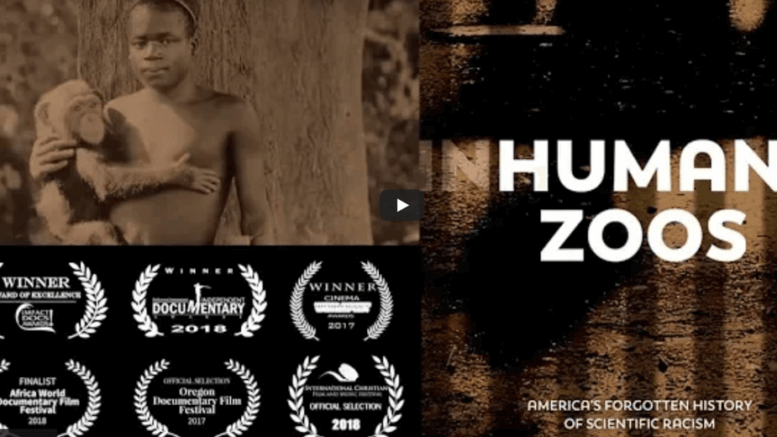by William Wegert, D.Min
I was embarrassed, ashamed, and angry at the same time, but the most powerful emotion was anger. Before I explain the reason for these emotions, let me back up. I have lived in the beautiful city of Lynchburg, Virginia for the past 37 years. Much of my free time is spent studying the overwhelming amount of scientific evidence demonstrating the inadequacy of Charles Darwin’s theory to explain the life we see around us.
Evolutionist and the Emperor’s New Clothes
This is a passionate interest of mine because I was once a staunch evolutionist, having been well indoctrinated in the theory by college professors at the likes of Miami University, The Ohio State University, and Colorado State University.
However, after graduating with two science degrees and taking the time to actually look at the evidence, it became clear that the theory of evolution is the scientific equivalent of the Hans Christian Andersen’s folktale “The Emperor’s New Clothes.”
Everybody talks about evolution as if it is an established fact, when there is not a shred of evidence that one kind of plant or animal has ever morphed into a new one through random errors (mutations) in the genetic code followed by natural selection. Despite the ‘millions of years’ narrative, Darwin’s theory lacks any support in the realm of true science.
Human Zoos
Back to my emotions. I was listening to a powerful documentary entitled “Human Zoos,” a piece that begins by describing events that took place during the St. Louis World’s Fair in 1904. I learned that a man named Samuel Verner who was, sadly, a former missionary, went to the Congo in Africa and brought back a group of Pygmies who were put on display in an exhibit purporting to support the theory of human evolution from monkeys. Fair visitors looked as what they were told were pre-humans, creatures that reflected an earlier period in the long evolutionary path to modern Homo sapiens.
Ota Benga Displayed at the Bronx Zoo
After the fair ended, Verner returned the Africans to their native country, but one of the Pygmies named Ota Benga, ended up coming back to the US with him. Benga was later put on display at the Bronx Zoo in New York. At first, he could freely roam the zoo grounds, but after reacting violently against the crowds that chased, poked, and otherwise harassed him, he was placed in the zoo’s Monkey House. Though officials would later deny it, he was looked upon as a sub-human, once again on exhibit to curious zoo-goers as evidence of human evolution.
The New York Times vs Black Clergymen
Thankfully, a group of Black clergymen protested Benga’s treatment and said that he should be in school not in a zoo. However, the New York Times had a different view when they wrote, “The pygmies … are very low in the human scale, and the suggestion that Benga should be in a school instead of a cage ignores the high probability that school would be a place … from which he could draw no advantage whatever.” Finally, after the pastors appealed to the mayor of New York for his release, Benga was put into the custody of a man named James M. Gordon, supervisor of the Howard Colored Orphan Asylum in Brooklyn.
While this setting was better than the zoo, Benga was by this time 23 years old and having been married twice and fathered two children back in Africa. Being much older than the other orphans, he was moved to the Baptist Seminary in Lynchburg, Virginia. It was at this point in the documentary that I froze in my tracks. Ota Benga lived in my city of Lynchburg, Virginia? How could I not have known this after living here for nearly four decades?
Ota Benga’s Tragic End
But the story gets much worse. Benga became very homesick and began making plans to return to the Congo. However, in 1914, World War I broke out, halting passenger ship traffic across the ocean. Benga realized that his dream of being reunited with his people would never be realized. Falling into a depression, Benga took his own life with a borrowed pistol in 1916.
At this point in the story, I experienced the triple emotions referenced above. I am embarrassed that I have lived in Lynchburg for as long as I have without knowing this unbelievably tragic story. I was ashamed that fellow humans would treat a person in such a humiliating fashion. But most of all, I was angry that our society continues to perpetuate the lie of Darwinian evolution despite the horrifying consequences when the theory is taken to its logical conclusion.
Eugenics and Hitler’s Holocaust | Rooted in Darwin’s theory of Evolution
I highly recommend this award-winning documentary, which can be found at www.humanzoos.org. But be prepared to be further angered as it goes on to describe the horrors of the eugenics movement and Hitler’s Holocaust, both firmly rooted in Darwin’s theory of evolution.
William Wegert, D.Min., M.Div., M.S., B.S.
Human Zoos: America’s Forgotten History of Scientific Racism




